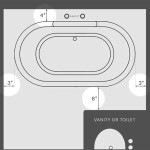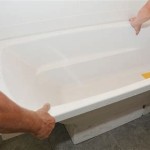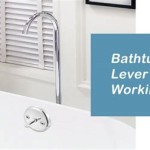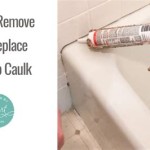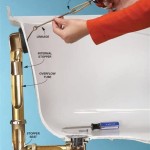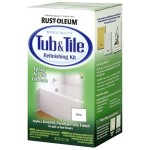Essential Aspects of Bathtub Waste And Overflow
A bathtub drain is a necessary component of any bathroom. It allows water to drain from the bathtub and prevents it from overflowing. There are two main types of bathtub drains: waste and overflow drains. Waste drains are located at the bottom of the bathtub, while overflow drains are located near the top of the bathtub. Both types of drains are essential for the proper functioning of a bathtub.
Waste drains are responsible for draining water from the bathtub. They consist of a drainpipe, a drain stopper, and a drain flange. The drainpipe is connected to the bathtub's plumbing system and carries water away from the bathtub. The drain stopper is used to plug the drain and prevent water from draining out of the bathtub. The drain flange is a metal or plastic ring that fits around the drainpipe and helps to seal the drain.
Overflow drains are responsible for preventing water from overflowing the bathtub. They consist of an overflow pipe, an overflow cover, and an overflow flange. The overflow pipe is connected to the bathtub's plumbing system and carries water away from the bathtub if the water level gets too high. The overflow cover is a metal or plastic cover that fits over the overflow pipe and helps to prevent water from splashing out of the bathtub. The overflow flange is a metal or plastic ring that fits around the overflow pipe and helps to seal the drain.
Bathtub drains are relatively simple devices, but they are essential for the proper functioning of a bathtub. By understanding the different types of bathtub drains and their functions, you can ensure that your bathtub is draining properly and preventing water from overflowing.
Maintenance and Troubleshooting
Bathtub drains require minimal maintenance, but there are a few things you can do to keep them in good working condition. First, clean the drain regularly to remove hair, soap scum, and other debris. You can use a drain cleaner or a mixture of baking soda and vinegar to clean the drain. Second, check the drain stopper and overflow cover regularly to make sure they are properly sealed. If either of these components is damaged, it can cause water to leak from the bathtub.
If you are experiencing problems with your bathtub drain, there are a few things you can try to troubleshoot the problem. First, check to make sure that the drain stopper is properly sealed. If the drain stopper is not properly sealed, water can leak from the bathtub. Second, check to make sure that the overflow cover is properly sealed. If the overflow cover is not properly sealed, water can overflow the bathtub. Third, check to make sure that the drainpipe is not clogged. If the drainpipe is clogged, water will not be able to drain from the bathtub.
If you are unable to troubleshoot the problem yourself, you may need to call a plumber for assistance.

Grohe Pop Up Bath Waste And Overflow

How To Size A Tub Drain

Chained Bath Waste With Overflow 1 2 Toolstation

Mcalpine Bath Waste Overflow 16 Fix

Waste And Overflow Upcodes

Drain Overflow Assemblies Fine Homebuilding

Oatey Plastic Tubular Uni Lift Bath Waste And Overflow Kit P8227 The Home Depot

Cable Drive Bath Waste Overflow Luxury Bathrooms Crosswater London

Plumb Bathtub Drain Waste Overflow Kit Canadian Tire

Burlington Clack Waste Including Overflow Old Fashioned Bathrooms
Related Posts

